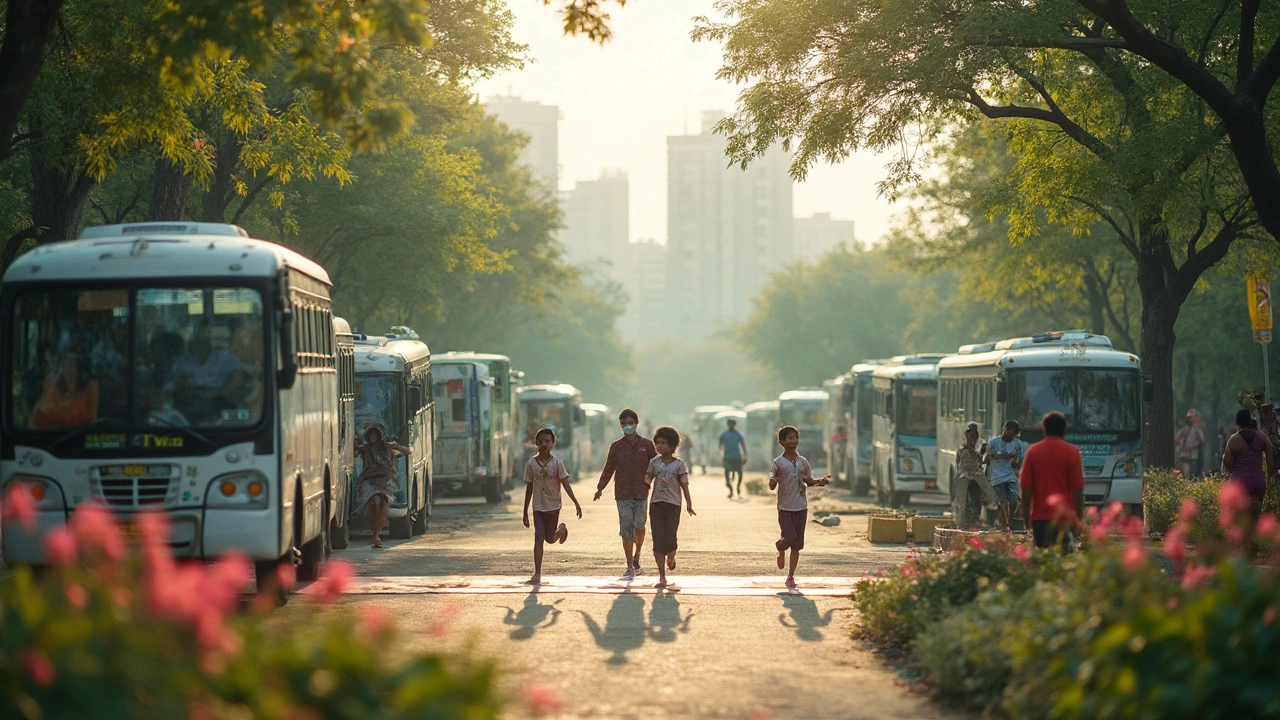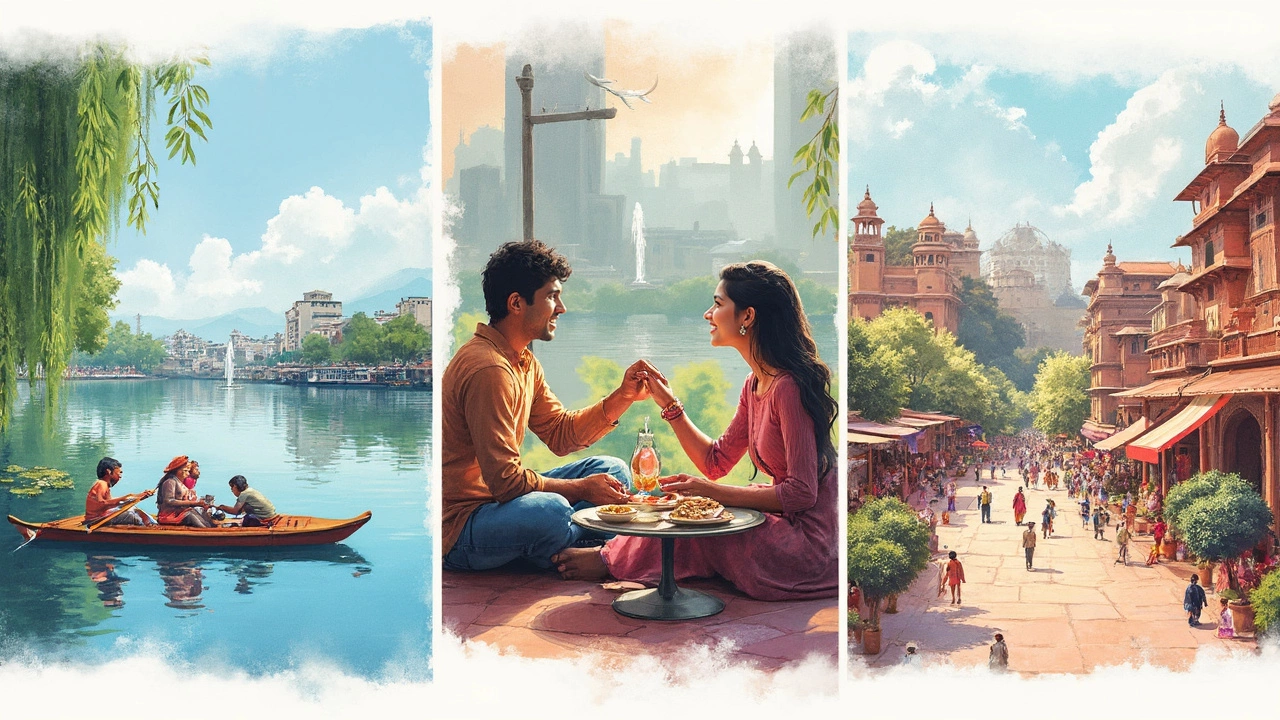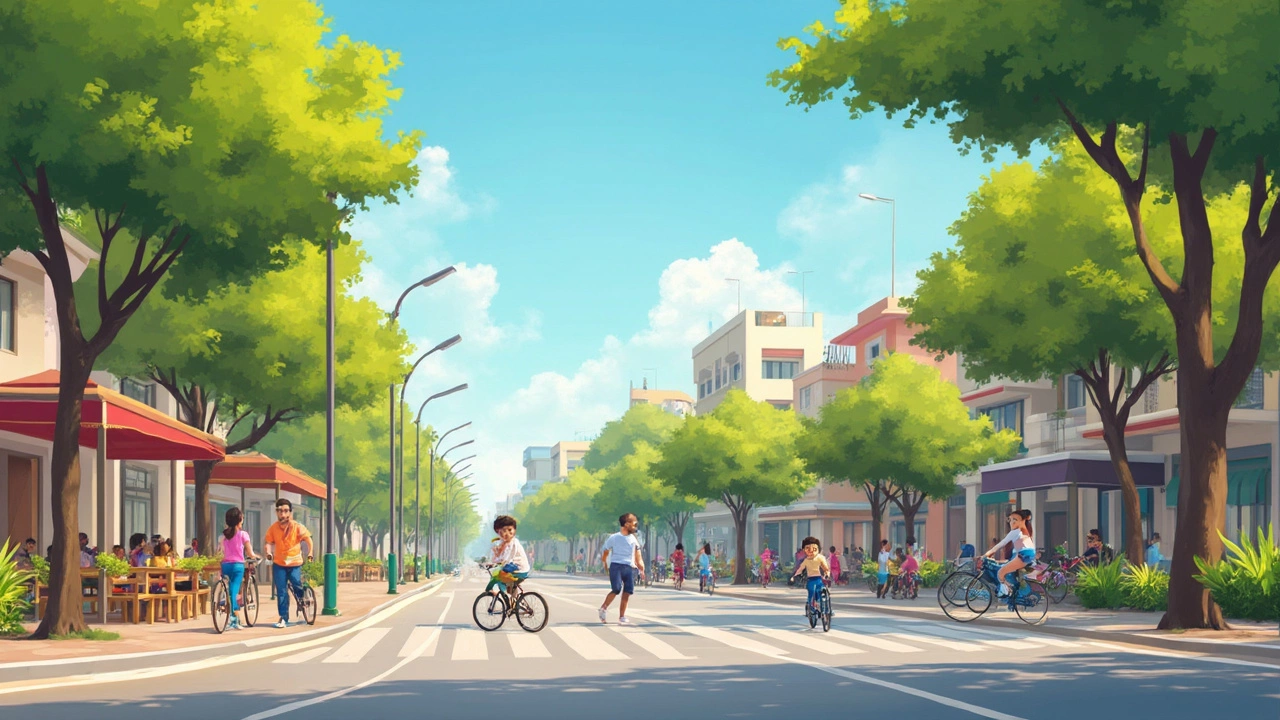Ever wondered if all Indian cities are just loud, crowded, and chaotic? It’s not that simple. If you care about quality of life—stuff like clean air, easy commutes, and not paying a fortune for your morning coffee—some cities in North India stand out from the rest.
Look past the postcard photos and travel brochures. We’re talking safe neighborhoods, parks that are more than just dusty patches, affordable living and food actually worth eating. Cities like Chandigarh, Jaipur, and Lucknow are always popping up in rankings for a reason. People move for work, but plenty of folks stick around for the lifestyle.
If you’re planning a trip or even thinking of a longer stay, knowing what daily life feels like matters more than just ticking things off your sightseeing list. This isn’t just about monuments and shopping—it's about which city lets you breathe easy, sleep sound, and maybe even find your new favorite street foodie without a long search.
- What Makes a City 'Liveable' in North India?
- The Top Contenders: City-by-City Breakdown
- Daily Life: Costs, Comfort, and Community
- Stress Busters: Green Spaces and Clean Air
- Tips for Choosing Your North Indian City
What Makes a City 'Liveable' in North India?
People keep tossing around the term "quality of life" but what does it actually mean in the North Indian context? It's not just about wide roads or fancy malls. A city’s real test is how it treats its people every single day—through smoggy winters, sweltering summers, busy school runs, and that never-ending hunt for decent street parking.
Here’s what most folks actually care about:
- Best quality of life: Clean air is a biggie. Anyone who’s spent a November in Delhi knows just how much air quality can tank. Cities like Chandigarh have tougher pollution rules and greener corners, so you can actually go for a morning walk without choking.
- Safety: Families want to feel safe going out for an evening ice cream. Crime rates play a huge role in how peaceful a city feels.
- Healthcare and education: Good hospitals and easy access to solid schools really move the needle. North India’s top cities usually boast decent private options but state-run services can be hit or miss.
- Green spaces: Parks, lakesides, walking trails—these are rare gold in North India’s urban jungle. Some spots like Lucknow and Chandigarh still manage to keep them uncluttered and lively.
- Transport and commutes: The shorter your commute, the more you’ll like your life. Metro lines, app-based cabs, and decent roads make all the difference.
- Cost of living: Your money should last the month. Affordable groceries, rents, and eating out without eye-watering bills really matter.
Let’s put some numbers on it. Check out how a few North Indian cities rank on basics people care about:
| City | Avg. PM2.5 (Air Quality) | Crime Rate (per lakh) | Avg. Rent 2BHK (City Centre, INR/month) | Parks per 100,000 residents |
|---|---|---|---|---|
| Chandigarh | 58 | 176 | 23,000 | 14 |
| Jaipur | 70 | 188 | 19,000 | 9 |
| Lucknow | 78 | 205 | 16,000 | 7 |
| Delhi | 132 | 235 | 37,000 | 4 |
As you can see, not every big city automatically means a better life. Small perks like less smog and more parks can add up fast. And honestly, nobody misses those 2-hour daily traffic jams or sky-high rents. Real "liveability" is about the little things working in your favor more often than not.
The Top Contenders: City-by-City Breakdown
Not every city in North India is created equal when it comes to comfort, cleanliness, and convenience. Let's get into the nitty-gritty of three favorites—Chandigarh, Jaipur, and Lucknow—that pop up often in conversations about the best quality of life.
- Chandigarh – This one usually tops the charts. Planned by a famous French architect, the city's grid system means smooth roads, organized neighborhoods, and traffic that usually moves. It consistently ranks high for cleanliness and greenery. Lawns aren’t just for the rich here—parks and green belts make a real difference. Fun fact: Chandigarh often scores above 80 in national quality of life surveys (where the national city average hovers around 62).
- Jaipur – The Pink City is more than palaces and old forts. Jaipur’s tech industry is growing, and so are its clean metro lines. Locals say the cost of daily essentials still feels reasonable, and it's the go-to place for folks who want a good balance between work and culture. Pollution does get rough in winter, but the city is investing more in green public transport and tree cover.
- Lucknow – You think of food and friendliness, right? Lucknow's culture is tough to beat, but it's also catching up fast in amenities. New townships, improved drainage, and lots of new malls make daily life easy. The commute isn't a nightmare compared to the megacities, and rents stay manageable. Its crime rates are lower compared to other UP cities.
Here's a quick look at how they stack up in numbers (2024 city surveys):
| City | Average Rent (2BHK, city center, INR/month) | Average Commute (minutes) | Green Space per Person (sq. m.) | Air Quality Index (AQI, lower is better) |
|---|---|---|---|---|
| Chandigarh | 18,000 | 22 | 21 | 85 |
| Jaipur | 15,500 | 28 | 13 | 110 |
| Lucknow | 13,400 | 34 | 10 | 135 |
Chandigarh really leads the pack in terms of planning and green space, but Jaipur and Lucknow both make a strong case if you value energy, affordability, and a distinct culture. Honestly, your best city depends on what mix of these factors matters most to you.

Daily Life: Costs, Comfort, and Community
Let’s get real about what it’s actually like living in a city claiming to have the best quality of life in North India. Your wallet, comfort level, and neighborly vibes all play into it. Chandigarh, for starters, isn’t just known for its neat layout—it’s got some of the cleanest streets and best public transport in the region. Veggies at the local market cost less than your fancy coffee back home, and you can zip across the city in an electric bus without needing a translation app.
If we’re talking cost of living, it’s smart to look at hard numbers. Here’s how the basics stack up in a quick price comparison across three top contenders:
| Chandigarh | Jaipur | Lucknow | |
|---|---|---|---|
| Monthly 1BHK Rent (City Center) | ₹12,000 | ₹10,000 | ₹9,500 |
| Basic Utility Bills | ₹2,300 | ₹2,000 | ₹1,900 |
| Public Transport (Monthly Pass) | ₹730 | ₹600 | ₹550 |
| Meal for Two (Mid-Range) | ₹800 | ₹700 | ₹650 |
Community matters a ton too. People in Chandigarh love to hang out in parks or join community yoga sessions; it's a city where you’ll see both grandparents and techies in the same morning jog crew. Jaipur has those old-school neighbourhoods—the kind where your street chai shop owner remembers your order. And Lucknow? There’s nothing like its evening bazaars buzzing with friendly faces and the smells of kebabs wafting down the lane.
If comfort means fewer power cuts and solid internet, Chandigarh and Jaipur both tick those boxes thanks to ongoing city upgrades. But Lucknow is catching up, especially in new housing colonies. Plus, you don’t have to be a local to join in the community stuff. Most cities have WhatsApp groups for hobby classes or city clean-up clubs; just ask around or check local Facebook pages.
- Stick to city transport for better savings and less hassle.
- Find rentals away from crowded main markets—you’ll save and sleep better.
- Try parks, cafes, and local gyms to meet new people without any awkwardness.
Moving or staying long-term? Watch for festivals—communities in these cities throw open their arms (and kitchens) come Diwali or Holi. Comfort and community are everywhere if you stay open and ask a few questions.
Stress Busters: Green Spaces and Clean Air
If you’re tired of fighting smog and concrete, you want a city that gives you room to breathe—literally. North India’s bigger cities might grab headlines, but only a few really stand out for their parks, trees, and decent air quality.
Chandigarh tops the charts here. Built as India’s first planned city, it’s got giant parks like Zakir Hussain Rose Garden and Sukhna Lake. You’re never too far from green. According to the State of India’s Environment 2024 report, Chandigarh's average Air Quality Index (AQI) hovers around 80–120 for most of the year. That’s way better than Delhi, where AQI drops into the 300s or even 400s during winters.
Another city in the running is Jaipur. Parks like Central Park and Jawahar Circle are popular for morning walks and family outings. Jaipur’s Green Cover Report 2023 says about 16% of the city’s area is covered by trees and parks, but it still struggles during peak pollution months.
Let’s stack up the daily facts:
| City | Main Parks & Green Spaces | Average AQI (2024) |
|---|---|---|
| Chandigarh | Zakir Hussain Rose Garden, Sukhna Lake, Leisure Valley | 100 |
| Jaipur | Central Park, Jawahar Circle, Ram Niwas Garden | 160 |
| Delhi | Lodhi Gardens, Deer Park, Nehru Park | 320 |
| Lucknow | Janeshwar Mishra Park, Gomti Riverfront | 180 |
What does that mean for your day-to-day life?
- If you have allergies or asthma, Chandigarh will likely be your best bet—cleaner air and more tree cover than anywhere else in North India.
- For joggers or weekend picnickers, cities like Jaipur and Lucknow offer decent park options, but expect air quality to dip during winter or festival season.
- Delhi technically has some big parks, but the pollution just doesn’t play nice most of the year. Masks aren’t just for pandemics here—they’re almost a daily habit.
Quick tip: Use an air quality app or website before outdoor plans. Cities often have local pollution updates, and it really does make a difference, especially if you're picking a morning run or family picnic spot. If green surroundings and cleaner air are at the top of your list, you’ll see why the best quality of life often goes hand-in-hand with more trees and less traffic.

Tips for Choosing Your North Indian City
Alright, so you’re set on North India, but picking the right spot isn’t always straightforward. Not every city suits everyone, and the wrong fit can totally mess up your vibe. Here’s how you narrow it down—with real tips that go beyond basic tourist advice.
- Best quality of life means something a bit different for everyone, so figure out your priorities: is it job options, cleaner air, or a slower pace? Chandigarh is one of the only Indian cities that’s actually a planned city, so traffic is less of a headache and the place feels organized instead of chaotic.
- Check the weather: North India swings between boiling summers and, in some places, proper winters. For example, Jaipur can be blazing hot, while places like Dehradun get cool breezes and even chilly nights in winter.
- Look into local transport. Lucknow has a decent metro and wide roads, but cities like Amritsar can still feel cramped if you’re not into crowded autos and city buses.
- Want parks and greenery? Chandigarh literally has over 26% of its area under green cover according to recent government stats. Compare that to Delhi, where most people rely on just a few big parks.
- How fast do things happen? Bigger cities move quicker but expect more noise and crowds. Smaller spots like Shimla or Dehradun won’t stun anyone with nightlife, but they’re perfect for quiet mornings and fresh air.
Don’t forget daily costs—they can be all over the place. Here's a quick look at three favorites people love for their lifestyle:
| City | 1BHK Rent (city center, per month) | Average Commute Time | Average AQI (Air Quality Index) |
|---|---|---|---|
| Chandigarh | ₹17,000 | 20 min | 90 |
| Lucknow | ₹13,500 | 30 min | 120 |
| Jaipur | ₹14,000 | 25 min | 130 |
If community is important for you, try chatting with locals on Facebook groups or Reddit before making a long-term move. You’ll get the raw version of what living there really feels like.
One more thing: test the food scene. North Indian cities are all about street snacks, but the variety and price can shift a lot. In Chandigarh, you’ll find everything from samosas at every corner to high-end coffee shops, while Jaipur’s old city keeps things a bit more traditional (and honestly, spicier).
So, start with your checklist. Do a short visit if you can. The friendlier cities in North India really stand out when you walk their neighborhoods and see if their pace matches yours.
